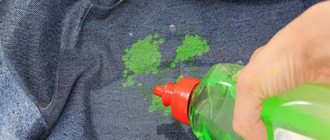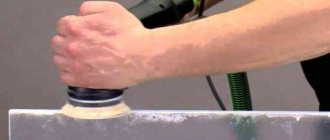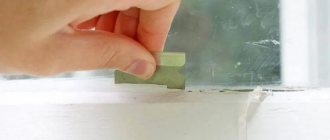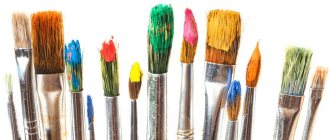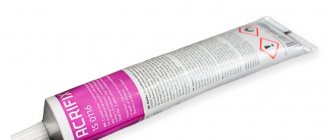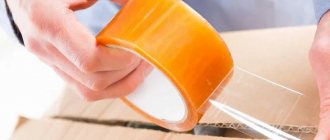You can polish plexiglass with toothpaste
Due to its properties, plastic is used in all areas of human life, therefore, during long-term use, all products are subject to various mechanical influences. Unfortunately, over time, cracks and scratches appear on the plexiglass, and it loses its shine. But it turns out that with the help of simple manipulations you can restore a beautiful appearance to this material.
The main disadvantage of plexiglass is the low hardness of the surface, which is why there is a high probability of scratches. Today, new research is being conducted, new components are being added in the hope of obtaining a more durable composition. But while it is not possible to increase the strength of the artificial glass material, you need to learn how to restore its damaged appearance. And we will be able to do this only when we learn how to remove scratches from plexiglass.
What you need to know before cleaning plexiglass
many advantages as a coating material . Durable , durable and lightweight , its installation does not present any difficulties. Aesthetically pleasing due to its transparent color glass-like appearance , plexiglass is used in many different applications. However, when dirt settles on its surface, this material is easily damaged. Despite its durability, certain precautions should be taken when cleaning:
- Prohibition of the use of aggressive and solvent-based products that may damage the plexiglass;
- Never wipe the surface dry to prevent dust from scratching the plexiglass;
- Check the components of the cleaner you are using : ammonia, cleaning powder, acetone, gasoline or thinner are the enemies of plexiglass;
- If possible, choose a cleaner with an eco-label ;
- Do not use abrasive scouring pads or cloths such as the green side of a sponge.
How to clean plastic surfaces?
A fairly durable and inexpensive material is used everywhere in the modern world. We can see it directly in light color on various household appliances, including kitchen appliances, as household items (mirror frames, shelves), as well as in windows.
However, it also has a negative property - it is soiled. And if a light coating can be washed off with soap, it is extremely difficult to remove stubborn stains. There is also a problem when window sills and refrigerators lose their snow-white color and turn irrevocably yellow. Absorbent substances, either natural or synthetically produced, help to cope with the problem. They penetrate deep into the structure and restore its original appearance.
Speaking about 5 universal methods that can cope with almost any contamination, it is also worth emphasizing their availability:
- Soda paste. Gradually pour warm water one teaspoon at a time into a container of baking soda. This paste is applied with a sponge and left for 2-3 hours and then washed off. However, you should refrain from using this method if you are talking about a glossy surface;
- Vodka. It can be applied in its pure form, but it is advisable to apply locally - only on stains. It is not advisable to use on colored surfaces and where there is a pattern, it may smear or float;
- Ammonia. Mix 1 tablespoon with a liter of water. Easier to apply using a spray bottle. It will correct the problem of kitchen stains due to grease deposits, and also refresh window frames;
- Stain removers. They are sold in stores for motorists, and also sometimes in specialized departments of household chemicals. Select the substance strictly for this type of material and do not forget to test the effect before use;
- Professional chemistry. Cif cream, LOK cleaner, Glorix spray and many other products deal with stains quickly and efficiently without damaging the product. The main thing is to take the time to read the instructions so as not to overdo it with the waiting time before rinsing.
Required Tools
Before cleaning, it is recommended to prepare the necessary tools . Ideally, they should be grouped close to the work area so that they are easy to reach. Here is a list of tools needed to properly clean plexiglass:
- Sponge or soft cloth;
- From warm water ;
- Suede so as not to scratch the surface;
- Spray ;
- Rotating brush or scraper for large areas.
Available commercially, much of this material is relatively affordable.
General lens processing algorithm
Before starting the procedure, you must make sure that the glasses are made of plastic, since the abrasive agents that will be used in the process of cleaning glasses are not intended for glass surfaces.
You can remove defects at home by following these steps:
- Preparing lenses. They are thoroughly cleaned of dust with a special product and a soft cloth.
- Freeing them from the frame.
- Applying polish. Using a cotton swab, apply the product to the damaged surface, then place the lenses in a container.
- Washing. A few minutes after applying the substance, the glass is rinsed with cold water, the gloves and container are thrown away.
- Installation. Upon completion of all procedures, the lenses must be carefully inserted into the frame.
Important! After this procedure, the glasses lose their protective layer. And now they can easily acquire new scratches that will be impossible to get rid of.
Suitable products for effective cleaning
There are two methods for getting rid of dirt accumulated on the surface of plexiglass. The first is washing with dishwashing liquid, a solution that is both simple and inexpensive. Another prefers a more environmentally friendly solution , using a mixture of 3 cups of water and a cup of vinegar . However, if there are stubborn or greasy stains, or if the plexiglass surface has lost its shine, these products may not be effective. Therefore, it is necessary to resort to other methods:
- To remove stubborn stains, you can use a glass cleaner , but only a certified eco-friendly one, or a mixture of water and dishwashing liquid .
- To restore the shine to dull plexiglass, use a mixture of water and soap will do.
Differences in polishing small, deep, extensive scratches
You can remove tiny abrasions on lenses yourself using one of the above methods and a soft polishing cloth. The main thing is that the product does not damage the surface and does not lead to complications in the form of large cracks or other damage. By regularly polishing your plastic glasses, small scratches will quickly disappear from the lenses.
The presence of deep or even extensive damage requires more serious action, so soap, vinegar or toothpaste will not work in this case. To eliminate such problems, it is necessary to remove the entire surface layer of glass.
Steps to Clean Plexiglas
Once the equipment and the right products are available, it's time to clean the plexiglass. To remove dust and dirt, follow these steps:
- Mix water and dishwashing liquid ;
- Pour the mixture into a spray bottle;
- Spray the plexiglass;
- Wipe with a damp sponge or soft cloth ;
- Rinse equipment when cleaning;
- Rinse the surface with clean water;
- Wipe the plexiglass with chamois leather .
For the ecological method, proceed as follows:
- Mix 1 cup vinegar and 3 cups water in a spray bottle;
- Shake gently;
- Spray onto the surface of the plexiglass;
- To complete cleaning, wipe gently with a lint-free cloth.
You can also use eco - labeled glass cleaners . It is important to note this mention on the product packaging. Indeed, the presence of solvents can damage plexiglass during cleaning. To clean with window , it is recommended to carefully read the instructions for use .
How to clean plastic windows?
There are several directions for combating contamination of this material. One of them is a set of detergents that are effective in eliminating local formations, for example, yellow spots under a flower pot or darkening due to mold:
- Laundry soap. It is necessary to cut it with a knife or grate it and mix it with warm water until a paste forms. This substance is applied to the contaminated area and left for half an hour. After this time, the stain must be wiped off with a sponge (hard side). In this way, the thinnest layer is mechanically removed, and along with it the yellowing.
- Washing powder and soda. The technique remains the same - microparticles of substances simultaneously soften the material and remove the damaged layer. The proportions should be observed: dissolve one tablespoon of each component in two glasses of warm water. Leave the liquid on the surface for half a day and then rinse with a damp sponge.
- Car cosmetics. What products are designed to clean this material, so they will carefully and effectively deal with various contaminants. For quick processing, sprays, polishes and creamy substances are used. After use, it is advisable to ventilate the room to avoid reactions in allergy sufferers.
- Wipes for the care of computer equipment. Suitable for new windows, where you want to maintain their original appearance and avoid negative consequences from washing. However, the effect will be insignificant if the damage is several years old.
Another method of control is the use of chemicals that actively affect the composition. Among them are:
- Ethanol. It does an excellent job of removing yellowness, as well as other contaminants everywhere. However, you should be careful and test it on your window in an inconspicuous place, for example, in a corner under the windowsill.
- Hydrogen peroxide. It must be used undiluted. Apply with a sponge to the damaged area to achieve results, repeat the procedure up to four times. The advantage of this method is its 100% efficiency.
- Acetone. It can be found in household chemicals stores and in women's cosmetics bags. However, a rapid reaction with plastic can also cause negative consequences. Therefore, before use, it is worth checking whether the liquid leaves excessive bleaching and whether it corrodes the product.
Remove scratches on plexiglass
External influences contribute to the appearance of scratches on the surface of plexiglass. The ideal solution for restoring transparency is polishing paste . Here are the next steps:
- Take a tube of polish and a cloth ;
- Place a small amount of product onto a glass;
- Make circular movements with the cloth for 1 minute over the affected area;
- Repeat the operation if there are stubborn grooves.
What is the best way to clean a plastic kitchen?
In such rooms, plastic products are also exposed to constant high temperatures. Fatty deposits, which accumulate as a result of constant cooking, also have a negative effect. However, it is still possible to solve the problem.
When cleaning kitchen surfaces, substances are used that are harmless to the body, since they can enter the esophagus with food or due to contact of dishes with the surface:
- If it's not a glossy product, you might want to try mustard powder. This method does not require dilution with water, but is used dry - that is, it has a mechanical effect. Sprinkle the powder onto the affected surface and wipe with a cloth.
- The same trick can be done with regular baking soda. Rub the countertop with a sponge and leave for 20 minutes, and after the time has elapsed, rinse thoroughly.
- In some cases, sunflower oil diluted with water will be effective. Keep the proportions two to one. Apply the resulting liquid to the affected area for 15 minutes, and then wipe with a damp cloth.
Tips for removing grease splashes
If oil or tar stains appear on plexiglass, it loses its aesthetics and becomes unpleasant to the touch. In addition, the material becomes less durable. A deep scrub thus turns out to be essential. To do this, you can use three methods:
- There is nothing better than a natural and eco-friendly solution for removing grease stains from plexiglass: lemon . This citrus fruit is prized for its many benefits, starting with its degreasing effect. You need to cut the lemon in half, squeeze two quarters to collect the juice. The next step is to pour two tablespoons of lemon juice and water . Close the lid and shake in a slow circular motion for a few seconds. Then spray the surface with the mixture from top to bottom. Then the plexiglass must be wiped with a microfiber cloth , making S- shaped gesture. , always from top to bottom. Repeat the motion to remove any remaining product.
- The effect of alcohol on grease stains is no longer discussed. To do this, lightly dampen microfiber cloth in alcohol . The surface should then be rubbed and then scrubbed in the usual manner.
A few words about protective film
The film on plastic windows protects the surface of the plastic during the transportation of windows and their installation. Moreover, manufacturers use special adhesives to glue it so that there are no problems with removal in the future. However, the coating is not intended to remain on the windows for a long time .
The fact is that gradually the glue under the film dries out and eats into the surface of the plastic. In addition, the coating itself is destroyed in the sun and loses its characteristics. As a result, when removed, the old film begins to tear or even crumble.
“Fresh” film is most often removed without any problems
From this we can conclude that it is necessary to remove the film as soon as possible, after installing the windows . True, if the windows are cheap, then problems may arise even when removing the recently glued covering, due to the use of low-quality glue.
But, in any case, you shouldn’t despair, because there are quite effective ways to remove old film from plastic windows, even if it is “tightly” ingrained into the plastic. The main thing is to have patience and some tools, which I will discuss below.
In the summer, the glue dries much faster and eats into the plastic than in the cold season.


